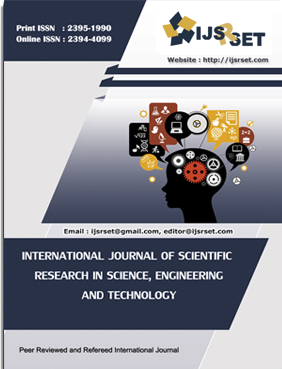A Review on Marathi Braille
DOI:
https://doi.org/10.32628/IJSRSET251214Keywords:
Visual impaired people, Braille Language, Bharati Braille, Marathi Braille System, Text ProcessingAbstract
This paper investigates the complex process of translating Marathi text into Bharati Braille, emphasizing the critical importance of equitable information access for individuals with visual impairments. It provides an in-depth analysis of Bharati Braille's structure, encoding guidelines, and its adaptation to Indian languages, with a particular focus on Marathi's linguistic features and challenges. Through a comprehensive literature review, the study examines existing text-to-Braille conversion technologies, analyzing hardware and software solutions and their applicability to Marathi. Key challenges such as linguistic nuances, dialectical variations, and the preservation of semantic integrity during translation are explored in detail. The paper highlights technical barriers, including encoding complexities and readability issues, and stresses the need for innovative solutions to address these gaps. By offering actionable insights, this research supports the development of advanced text-to-Braille systems tailored to Marathi, fostering inclusivity and enhancing access to education and information for visually impaired individuals. This study aims to contribute to the broader goal of promoting social and educational inclusion, empowering individuals with visual impairments to participate fully in society.
Downloads
References
Reddy, V. K., Chaurasia, K., Bhambal, A., Moon, N., & Reddy, E. K. (2013). A comparison of oral hygiene status and dental caries experience among institutionalized visually impaired and hearing impaired children of age between 7 and 17 years in central India. Journal of Indian society of pedodontics and preventive dentistry, 31(3), 141-145.
Bettelani, G. C., Averta, G., Catalano, M. G., Leporini, B., & Bianchi, M. (2020). Design and validation of the readable device: a single-cell electromagnetic refreshable braille display. IEEE transactions on haptics, 13(1), 239-245.
Roberts, J., Slattery, O., & Kardos, D. (2000, May). 49.2: Rotating‐wheel braille display for continuous refreshable braille. In SID Symposium Digest of Technical Papers (Vol. 31, No. 1, pp. 1130-1133). Oxford, UK: Blackwell Publishing Ltd.
Nadeem, M., Aziz, N., Sajjad, U., Aziz, F., & Shaikh, H. (2016, August). A comparative analysis of Braille generation technologies. In 2016 International Conference on Advanced Robotics and Mechatronics (ICARM) (pp. 294-299). IEEE.
Kavalgeri, S. A., Chakraborthy, R. V., Naz, S. F., & Chaitanya, K. J. E-Braille: A Study Aid for Visual Impaired. International Journal of Research in Engineering, Science and Management Volume-2, Issue-2, February-2019 www.ijresm.com | ISSN (Online): 2581-5792
Joshi, N., & Katyayan, P. (2023, March). A Model for Translation of Text from Indian Languages to Bharti Braille Characters. In 2023 6th International Conference on Information Systems and Computer Networks (ISCON) (pp. 1-4). IEEE.
Rathod, P. H., Dhore, M. L., & Dhore, R. M. (2013). Hindi and Marathi to English machine transliteration using SVM. International Journal on Natural Language Computing, 2(4), 55-71.
Blenkhorn, P., & Evans, G. (2001). Automated braille production from word-processed documents. IEEE Transactions on Neural Systems and Rehabilitation Engineering, 9(1), 81-85.
Blenkhorn, P. (1995). A system for converting Braille into print. IEEE transactions on Rehabilitation Engineering, 3(2), 215-221.
Singh, M., & Bhatia, P. (2010). Automated conversion of English and Hindi text to Braille representation. International Journal of Computer Applications, 4(6), 25-29.
Hassan, M. Y., & Mohammed, A. G. (2011). Conversion of English characters into braille using neural network. Iraqi J. Comput. Commun. Control Syst. Eng, 11, 30-37.
Shivakumar, B. L., & Thipathi, M. R. (2013). English to Braille conversion tool using client server architecture model. International Journal of Advanced Research in Computer Science and Software Engineering, 3(8), 295-299.
Zhang, X., Ortega-Sanchez, C., & Murray, I. (2007). A system for fast text-to-Braille translation based on FPGAs. In 2007 3rd Southern Conference on Programmable Logic (pp. 125-130). IEEE.
HR, S. K., & Ramakrishnan, A. G. A tool that converted 200 Tamil books for use by blind students.
Dasgupta, T., Sinha, M., & Basu, A. (2012, December). Forward Transliteration of Dzongkha Text to Braille. In Proceedings of the Second Workshop on Advances in Text Input Methods (pp. 97-106).
Durrani, O. K., & Shet, K. C. (2005). A New Architecture for Brailee Transcription from Optically Recognized Indian Languages.
Yoo, D. H., & Baek, S. W. (2022). Developing of Text Translation and Display Devices via Braille Module. Mathematical Statistician and Engineering Applications, 71(3), 537-547.
Park, T., Jung, J., & Cho, J. (2016). A method for automatically translating print books into electronic Braille books. Science China Information Sciences, 59, 1-14.
Al-Salman, A. M. S., El-Zaart, A., Al-Suhaibani, Y., Al-Hokail, K., & Gumaei, A. (2014). Designing braille copier based on image processing techniques. Int. J. Soft Comput. Eng. ISSN, 4(5), 62-69.
Downloads
Published
Issue
Section
License
Copyright (c) 2025 International Journal of Scientific Research in Science, Engineering and Technology

This work is licensed under a Creative Commons Attribution 4.0 International License.





